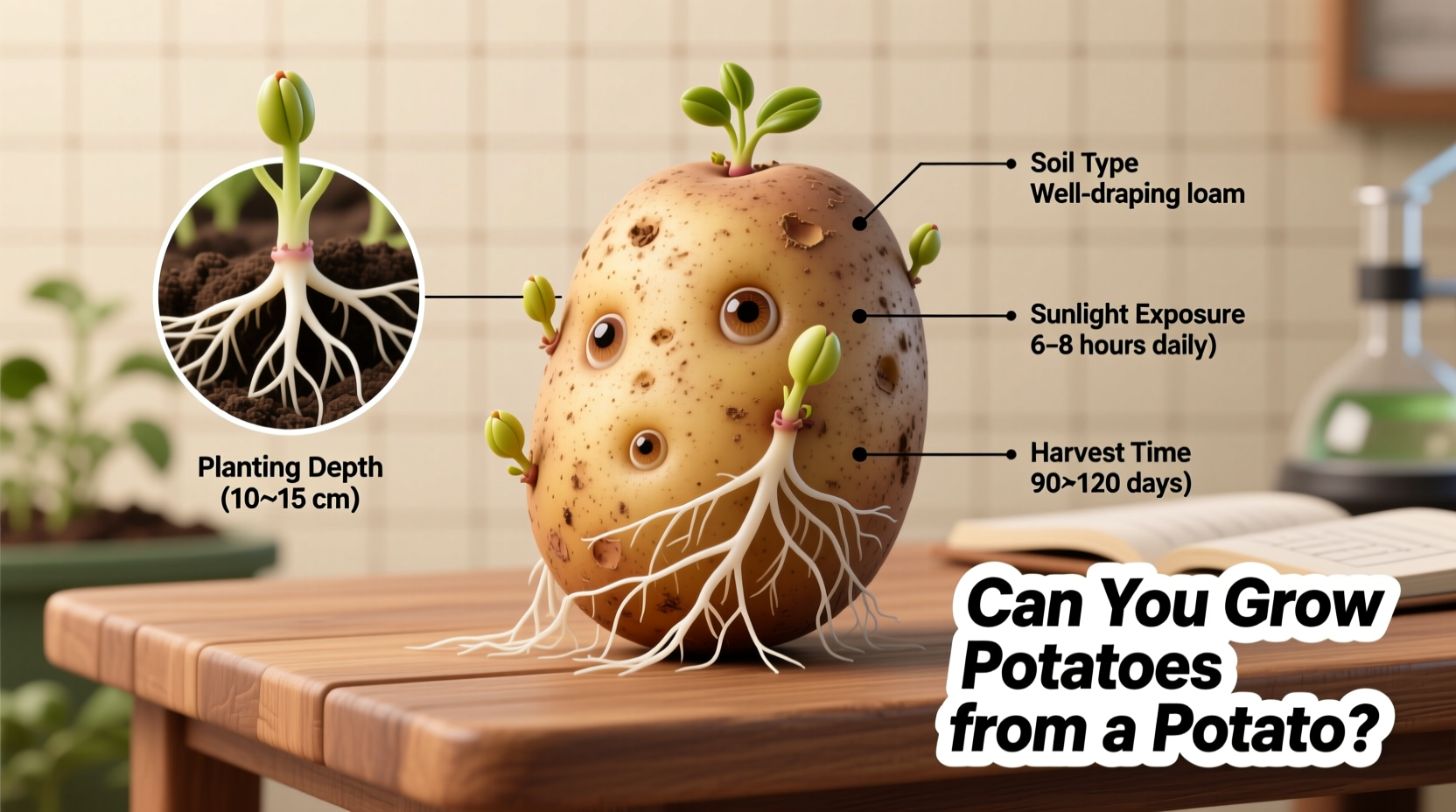Grow Your Own Potatoes: A Complete Guide for Home Gardeners
Discover how to transform a single potato into a bountiful harvest with minimal resources. This guide provides science-backed methods used by experienced gardeners to successfully grow potatoes from potatoes, complete with practical tips to avoid common pitfalls and maximize your yield.
Understanding Potato Propagation: It's Not What You Think
When you ask "can u grow potatoes from a potato," the answer reveals a fascinating biological process. Potatoes don't grow from seeds like most vegetables—they're tubers, specialized underground storage organs that naturally produce "eyes" or sprouts. These sprouts develop into new potato plants through a process called vegetative propagation.
Commercial farmers and home gardeners alike use "seed potatoes" for planting—which are simply potatoes specifically grown for reproduction, not consumption. This method preserves the exact genetic characteristics of the parent potato, ensuring consistent results.
| Seed Potatoes | Grocery Store Potatoes |
|---|---|
| Certified disease-free | May contain sprout inhibitors |
| Specifically grown for planting | Treated for longer shelf life |
| Higher success rate (85-95%) | Lower success rate (40-60%) |
| Available in specific varieties | Limited to common varieties |
Source: Oregon State University Extension Service - Certified seed potatoes significantly reduce disease transmission compared to grocery store potatoes.
The Potato Growth Timeline: What to Expect
Understanding the growth stages helps you provide proper care at each critical phase. Here's the typical timeline when growing potatoes from potatoes:
- Pre-sprouting (Chitting): 2-4 weeks before planting - potatoes develop small sprouts
- Planting to Emergence: 2-4 weeks - shoots break through soil surface
- Vegetative Growth: 4-6 weeks - leafy plants develop
- Tuber Initiation: 6-8 weeks - underground tubers begin forming
- Tuber Bulking: 8-12 weeks - potatoes grow to full size
- Maturity: 10-16 weeks - foliage yellows, signaling harvest time
Source: USDA Agricultural Research Service - Potato varieties have different maturity periods, with early varieties ready in 70-90 days and late varieties taking 110-130 days.
Step-by-Step: Growing Potatoes from Potatoes
Selecting Your Potato Starter
Choose potatoes specifically intended for planting rather than consumption. Certified seed potatoes from garden centers or reputable online suppliers guarantee disease-free stock and variety accuracy. While grocery store potatoes might sprout, they often contain sprout inhibitors and carry higher disease risks.
Best varieties for beginners:
- Russet Burbank (baking potatoes)
- Yukon Gold (all-purpose)
- Red Pontiac (boiling potatoes)
- Kennebec (reliable yield)
Preparing Potatoes for Planting
Proper preparation significantly increases your success rate:
- Chitting (pre-sprouting): Place potatoes in a cool, bright location for 2-4 weeks until 1/2-inch sprouts develop
- Cutting (if needed): For larger potatoes, cut into 1.5-2 inch pieces with at least 1-2 eyes per piece
- Curing: Allow cut pieces to dry for 24-48 hours to form protective calluses
Planting Your Potatoes
Timing and technique are crucial for successful potato growth:
- When to plant: 2-4 weeks before last frost date, when soil temperature reaches 45°F (7°C)
- Soil requirements: Loose, well-draining soil with pH 5.0-6.0
- Planting depth: 3-4 inches deep, eyes facing up
- Spacing: 12-15 inches between plants, 24-36 inches between rows

Caring for Growing Potato Plants
Proper maintenance ensures healthy growth and maximum yield:
- Hilling: When plants reach 6-8 inches tall, mound soil around base (repeat every 2-3 weeks)
- Watering: Consistent moisture (1-2 inches per week), especially during tuber formation
- Fertilizing: Balanced fertilizer at planting, then high-potassium feed during tuber development
- Pest monitoring: Watch for Colorado potato beetles and aphids
Harvesting Your Potatoes
Knowing when and how to harvest affects storage potential:
- New potatoes: Harvest 2-3 weeks after flowering for small, tender potatoes
- Main crop: Wait until foliage yellows and dies back completely
- Digging technique: Use a fork to carefully lift plants from soil
- Curing: Dry harvested potatoes in cool, dark place for 2 weeks before storage
Avoid These Common Potato Growing Mistakes
Even experienced gardeners make these errors that reduce yields:
- Planting too early in cold, wet soil (causes rot)
- Using grocery store potatoes treated with sprout inhibitors
- Insufficient hilling (exposes tubers to sunlight, causing greening)
- Inconsistent watering (leads to cracked or misshapen potatoes)
- Harvesting too early (small yield) or too late (damaged by frost)
Source: University of Minnesota Extension - Proper hilling technique prevents tuber greening, which produces solanine, a toxic compound that makes potatoes unsafe to eat.
When Potato Propagation Won't Work
While growing potatoes from potatoes is generally reliable, certain conditions limit success:
- Disease transmission: Using infected potatoes spreads diseases like blight or scab
- Climate limitations: Potatoes struggle in consistently hot climates (above 80°F/27°C)
- Soil issues: Heavy clay soils cause misshapen tubers and rot
- Day length sensitivity: Some varieties require specific day lengths to form tubers
For optimal results, match potato varieties to your local climate and growing conditions. Short-season varieties work best in northern regions, while long-season types thrive in southern areas with cooler springs.
Troubleshooting Common Potato Problems
Identify and address these frequent issues:
- Yellowing leaves: Could indicate nutrient deficiency, overwatering, or disease
- Small tubers: Often caused by overcrowding, poor soil, or inconsistent watering
- Green spots on potatoes: Exposure to sunlight—always hill properly to cover developing tubers
- Hollow centers: Result from rapid growth followed by drought conditions
- Scab lesions: Caused by soil bacteria—maintain consistent moisture to prevent
Conclusion: Your Potato Growing Journey Begins Now
Growing potatoes from potatoes is one of the most rewarding and accessible gardening projects for beginners. With proper selection, preparation, and care, you can transform a single potato into dozens of harvestable tubers. Remember that patience and attention to detail—particularly with watering consistency and hilling—make the difference between a modest yield and a bountiful harvest.
Start small with just a few seed potatoes this season, and you'll likely find yourself expanding your potato patch year after year as you discover the superior flavor and satisfaction of homegrown potatoes.











 浙公网安备
33010002000092号
浙公网安备
33010002000092号 浙B2-20120091-4
浙B2-20120091-4